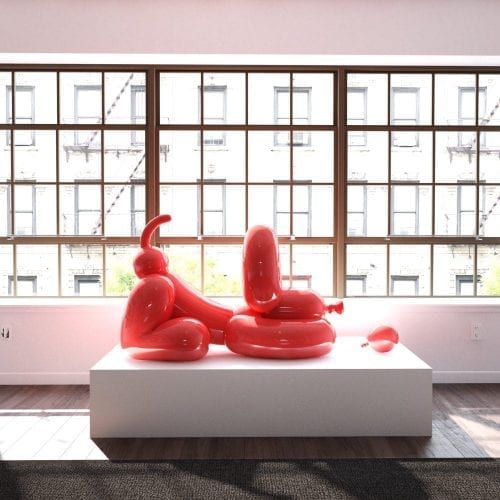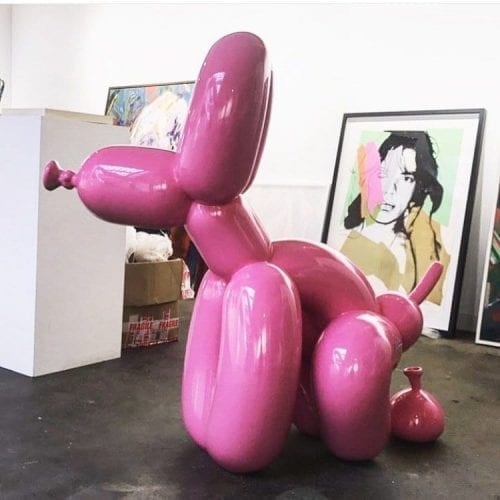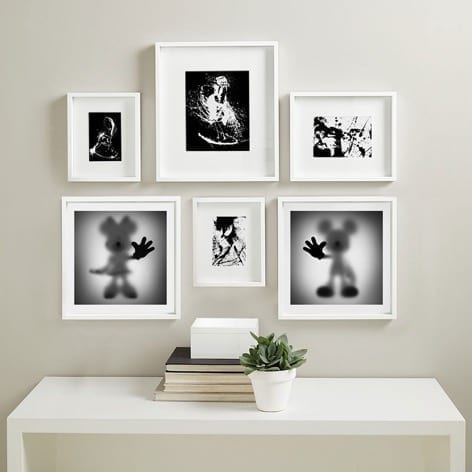
Fine Art vs Decorative Art: How to Tell Them Apart
Distinguishing between a fine art piece and a decorative piece can sometimes be difficult even for trained art professionals. After all, they are both decorative, skilfully made by talented artists, and can even look quite similar. Yet décor and fine art are different in their essence. If you are having trouble understanding the difference between decorative and fine art pieces, I have made a list of eight points that, across this and the next email, will help you make the difference between the two as clear as possible.
The Main Purpose of the Piece
Decorative art and fine art pieces serve different purposes. And while the main purpose of a decorative art piece is to be… well, decorative and enhance the surrounding space, the main purpose of fine art is to provoke emotions and intellectual responses. Fine art is there to get you thinking about relevant topics. Or to convey a variety of emotions that can range from love, joy, and passion, to sorrow, shock and distress. A good example would be dark and shadowy prints from the “Gone..” series which remind us of the characters from our childhood and evoke nostalgia. The POPek balloon dogs were often described as a conversation piece because of their humor and subject matter.
Unlike fine art where nothing is off-limits, decorative objects have to look aesthetically pleasing in order to fulfill their main function. Decorative objects can be a lot of things, but they are certainly never profound, ugly, disturbing or difficult to look at.
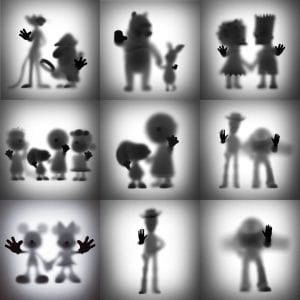
The Ambiguity of the Piece
Comprehending a fine art piece demands more knowledge and expertise. Fine art pieces can carry a myriad of meanings, which is why different people experience fine artworks in different ways. Fine artworks can mean one thing to the artist who created them, another to the art expert and something completely third to the viewers. Fine artworks are judged by carefully exploring their subject matter, medium, form, and context within the art history as they often refer to works of other artists via appropriation. A good example would be POPek the squatting balloon dog which refers to and over-saturates the art of Jeff Koons.
Decorative art is simple and direct. You don’t need an art history degree to understand decorative art. Deprived of a multitude of meanings and limited by its decorative function, decorative pieces convey the same message to everyone who observes them.
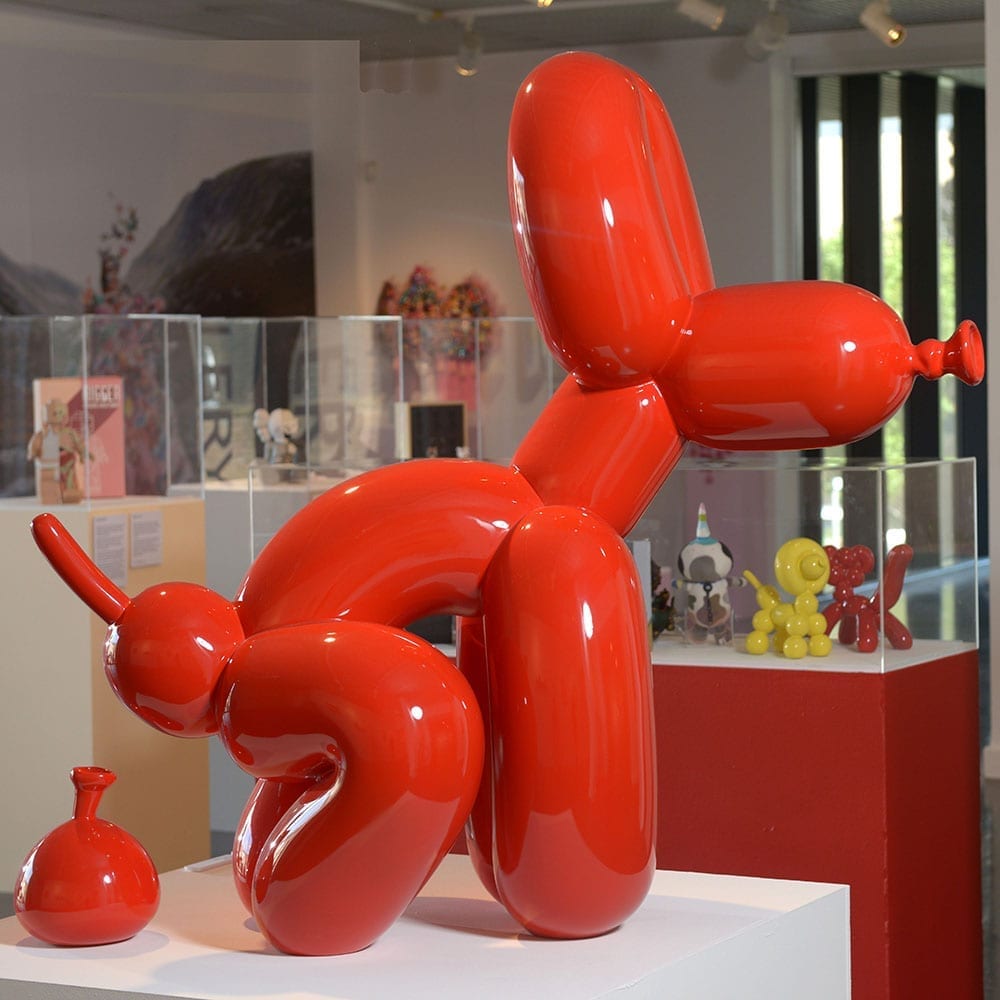
The Number of Editions
Though both décor and fine art pieces can come in multiples, fine artworks are usually made in fewer editions than decorative objects. Often many fine artworks are one of the kind and others are made in limited editions. As an example, a Pink POPek balloon 120cm tall is only made in 5 editions. On the other hand, decorative items can be multiplied to infinity. Since the main function of decorative art is to decorate and not to be original or rare, decorative art pieces are made in much bigger volumes.
Not only that the actual number of copies is higher, but the production process also varies significantly. Most decorative art pieces are made in a way that enables them to be easily copied. Décor artists often have different templates that they use and reuse to reproduce their pieces multiple times.
Fine art pieces, on the other hand, even when they are made in multiple editions are usually much more difficult to copy and reproduce. Historically fine art sculptures edition numbers were limited by the lifetime of the mould from which they were cast. Today this problem is less apparent because of the developments in tools and materials. A typical silicon mould, which I myself often use to cast my balloon dog sculptures, lasts for about 20 – 25 casts, therefore the larger sculptures are often limited to 15 – 25 editions.
The Difference in the Materials
Fine artists like to experiment with materials, in order to find the ones that best fit their creative process and the ones that communicate their message. In those experiments, they will try out an array of materials more and less expensive until they find the perfect one.
Decorative artists, on the other hand, use materials that are affordable and easy to use. Most decorative artists have a limited amount of money set aside for the supplies, which means that they have to use only the materials that won’t exceed their budget. As a result, decorative artworks are usually made of less expensive materials than fine artworks. This also affects the quality of the finished piece. Some of my large balloon dog sculptures were sanded and sprayed over six times to achieve the perfect uniform finish.
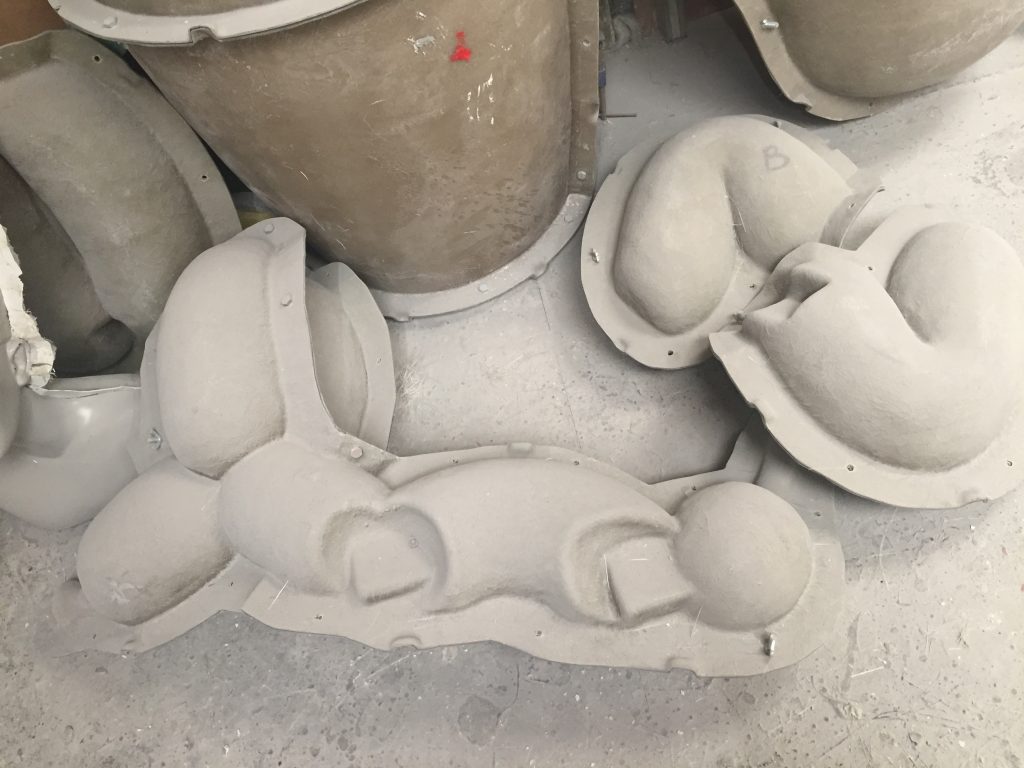
Different Creative Process
The decorative art-making process is much quicker and less complicated than fine art-making. In order to create an array of pieces in large quantities, many décor artists are forced to reduce the quality of their work. After all, it is important to make décor cost-effective and affordable. Fine artists are less prone to making these kinds of compromises.
Fine art is usually a result of a complicated creative process in which the artist tries out new things in order to portray his artistic vision. Fine art doesn’t have to be cost-effective. Fine artists will experiment with colors and materials and repeatedly change their creative process until they discover what best suits their chosen subject matter. That’s why creating a fine artwork often takes much more time than creating a decorative piece.
You might have noticed that my medium and large Balloon Dog sculptures are finished to the highest quality that the material would allow. The process is complex and sculptures must often be sanded and resprayed even six times to achieve the perfect finish.
Décor is Made According to Client Wishes
Thought both décor and fine art can be made on commission, the influence that the client has on the final appearance of the artwork greatly differs. Let’s consider paintings, when it comes to fine art regardless of who orders the artwork, the final decision is always in the hands of the artist. The client can only determine the size and the general topic of the artwork, but not the colors, the details or the exact composition.
When it comes to decorative art, clients have much more influence. Not only that they can choose the size and the topic of the artwork, but they can also choose colors, style and different elements on the piece. They also have the right to ask for the artwork to be changed and adjusted to fit their desires. The whole process leaves much less freedom for the artist to express their personal style.
Décor fits In, Fine Art stands Out
Decorative art pieces are often made with a certain interior in mind. The artist will often check out the place where the artwork should be displayed and then try to create a piece that matches the interior design of the space. Decor artists will use hues, patterns, shapes and lines that complement other elements of the room like furniture, the color of the walls and house accessories.
But fine art is self-standing. Fine art is not there to fit into a design or to mend into the background. Fine art is meant to stand out and become the focal point of the room. The entire design of the room is often changed to emphasize the artworks in it. While decor art is adjusted to the room, it is the room design that gets adjusted to fine artworks.
This should come as no surprise. After all, fine artworks are conversation starters, there to capture the attention of the viewers, to be discussed and contemplated over and over again. The purpose of the decorative piece, on the other hand, can simply be to fill an empty space in the wall.
Fine Art and Décor are Valued Differently
Decorative art is rarely seen as an investment. Affordable materials and simple production techniques make decorative art cheaper than fine artworks. Decorative pieces are difficult to resell and even when you do manage to resell them, you will probably get less money than you originally spent.
Fine artwork prices are premium but their value is expected to rise over time. Many people purchase fine art as an investment. That way apart from embellishing your walls, fine art can serve as an additional source of income, something you can sell when the time comes or even put as collateral for a loan if needed. Fine artworks might cost a little more, to begin with, but in the long run, they can become a profitable investment.
To Sum It Up!
Now that you know how to differentiate between décor and fine art, you can make a proper, informed choice for your home. It’s important to mention that, despite their differences both decorative and fine art pieces can look great in your home. It just depends on what you are trying to achieve. If you are looking for an art piece that will match the rest of the room and that will be soothing to the eyes of residents and guests alike, then feel free to pick a nice decorative piece. If showcasing a piece that will communicate what you stand for and what you believe in is your top concern, then a fine art piece is the way to go.


